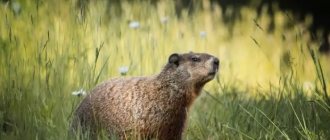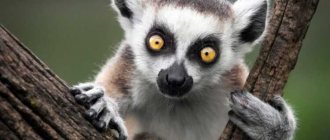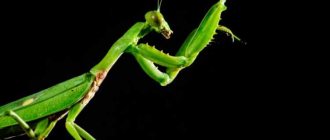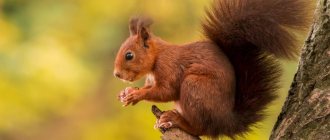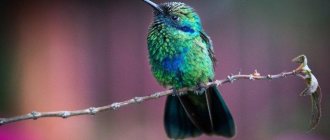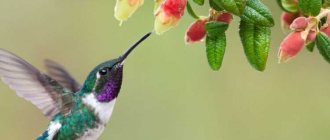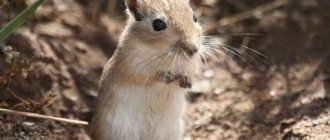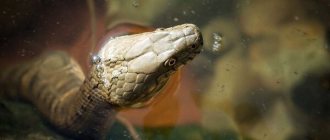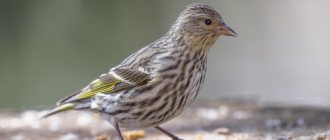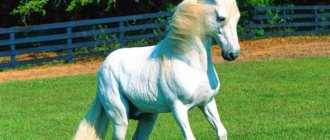In our article today, we will take a detailed look at a representative of the pseudopod family, for which scientists have created an entire species - the common boa constrictor. There are ten varieties in total. They are distributed in several climatic zones, and more precisely on the South and North American continent. In addition, large boa constrictors are found in the Caribbean islands.
These snakes love tropical and semi-desert climates. Humid forests are especially attractive - there are all conditions for comfortable living. They occupy mammal burrows, where they spend their rest or wait for prey.
Description
Among the boas there are real giants, for example the common anaconda (lat. Eunectes murinus), reaching a length of more than 10 meters.
The coloring of boas is similar to the dominant colors in their habitats. It can be in gray-brown tones in species that live on the ground, or bright, sometimes contrasting colors in individuals living in trees or on the forest floor. Some boas have stripes on their bodies, as well as large or small spots of round, oblong or diamond-shaped shapes and a wide variety of colors, and the spots can be with or without eyes. In some species, the skin can have a metallic sheen in all the colors of the rainbow (for example, the rainbow boa). Ground boas have the ability to change color, becoming lighter or darker in color. At night, light-reflecting spots and stripes appear on their body, which create a phosphorescent effect.
A characteristic feature of boas, in addition to a flattened head and lack of limbs, is a long, muscular body with a round cross section. The body of sand boas has a cylindrical shape, it is very dense and with developed muscles. Sand boas have no narrowing in the neck area, the tail is blunt and rather short.
The boa constrictor's skull has a unique structure that allows it to swallow large prey. This is achieved thanks to the movable connection of the bones of the facial part, as well as the elastic articulation of the parts of the lower jaw with each other. Sharp teeth are located not only on the jaws, but also on the bones that make up the oral apparatus (palatine, pterygoid and premaxillary). This is due to the fact that boa constrictors do not need teeth for grinding caught prey, but only for holding or pushing it deep into the esophagus. On the surface of the head there are large keratinized scutes, grouped in a certain order. Unlike pythons, boas do not have supraorbital bones.
- 35 facts about giraffes
- Animals of Crimea
- 36 facts about elephants
- Rodents
- 35 facts about foxes
- Animals of Brazil
Unlike other boas, in Mascarene boas the maxillary bone is divided into 2 movably connected parts: the anterior and posterior.
The structure of the shortened and flattened head of sand boas is interesting. The wedge-shaped upper jaw, which serves as a digging tool, is noticeably pushed forward, so the opening of the mouth is located below. The large intermaxillary shield extends onto the upper part of the head, taking on the entire load as the boa moves through the soil. The front teeth of the upper and lower jaws of the sand boa are slightly longer than the back ones.
Unlike other reptiles, which completely lack the girdles of the fore and hind limbs, boas have preserved pelvic bones in a rudimentary state. In addition, they retained the remains of their hind limbs, which appear as paired claws located on either side of the anus. True, there is an exception here: for example, Mascarene boas completely lack these rudiments.
Depending on the size of the boa constrictor, the number of vertebrae that make up the spinal column can range from 141 to 435. A characteristic feature of the structure of the snake’s skeleton is the absence of a sternum, which makes the ribs extremely mobile.
All internal organs of these reptiles have an elongated, modified shape, due to the general structure of the body. Paired organs are located asymmetrically and may be unevenly developed. For example, the right lung is significantly larger in size than the left. In ground boas (lat. Tropidophiidae), the typical left lung is absent - it has turned into a tracheal (tracheal) lung and is formed by the expansion of the posterior part of the trachea.
The nervous system of boas consists of a small brain and a well-developed spinal cord, which determines high accuracy and speed of muscle reactions.
Boas navigate the surrounding space thanks to the organs of smell and touch. In addition, most of the information is brought by thermosensitive receptors located on the front of the muzzle and a forked tongue, which transmits information to the brain using special paired organs, which are a kind of chemical analyzers.
The vision of boas is not particularly sharp. This is partly due to the fact that eyes with vertical pupils are always covered with a film formed from the eyelids fused together. The eyes of sand boas are small and slightly turned upward - this arrangement is convenient because, even when buried in the ground, the boa can observe everything that is happening on the surface without sticking out its head.
Due to the fact that reptiles lack external auditory openings and the middle ear is underdeveloped, all snakes have difficulty distinguishing sounds that travel through the air.
The body of boas is covered on the sides and top with diamond-shaped scales, slightly overlapping each other. Such plates are arranged in longitudinal or diagonal rows. Between the scales of the longitudinal rows there are areas of skin that are collected in small folds, allowing the integument of the body to greatly stretch. The plates located on the belly of reptiles have a transversely elongated shape and are also connected to each other by sections of skin.
As they grow, the outer coverings age and peel off. The molting process occurs, with the first change of skin occurring a few days after the snake is born. In healthy boas, the frequency of changing covers does not exceed 4 times a year.
Gender Differences
There are no fundamental differences in the size and color of males and females. In males, the tail is long with a characteristic thickening at the base; from the anus it is cylindrical, then turns into a cone. Females have a shorter tail, without thickening at the base, and cone-shaped. In males, relatively large, claw-like rudiments of the hind limbs are clearly visible, located on the sides of the anus; in females they are smaller and less prominent. Females are usually more massive and larger than males.
Where does the dog-headed boa live?
Photo: Dog-headed boa constrictor
The dog-headed boa constrictor is a very exotic person, with permanent residence on the territory of the South American continent.
It is found in the following areas:
- Venezuela;
- Guyana;
- French Guiana;
- Suriname;
- northeastern Brazil;
- Bolivia;
- Colombia;
- Ecuador;
- Peru.
The reptile prefers tropical, lowland, forest areas with high humidity, where it settles on both the first and second tiers of trees. Boas also inhabit wetlands. They prefer not to climb to a height of more than 200 meters above sea level, although individual specimens were also found at an altitude of about one kilometer. Green tree boas are widely distributed throughout the Canaima National Park, which is located in the southeastern part of Venezuela.
Moisture plays an important role in the life of green reptiles, so they often choose large river basins (for example, the Amazon) for their permanent locations. But the presence of a reservoir is not a necessary condition for their existence, it is just a preference. Boa constrictors also receive the moisture they need from precipitation, which in their places of residence receives up to 150 cm over a one-year period.
The home of boa constrictors is the crowns of trees, in which they spend most of their snake life, which is why they are called arboreal. And the life span measured for boa constrictors in the wild has not yet been precisely established, although in captivity it often exceeds the fifteen-year mark.
Now you know where the dog-headed boa constrictor lives, let's see what he eats?
Subspecies
There are 10 subspecies of the common boa constrictor (Boa constrictor):
| Subspecies | Russian name | Area |
| B.c. amarali | Bolivian boa constrictor | Southeastern Bolivia, southern Brazil, northern Paraguay |
| B.c. constrictor | Common boa constrictor | Brazil, eastern Colombia, eastern Peru, Venezuela, Suriname, Guyana, French Guiana |
| B.c. emperor | Imperial boa | Peru, Ecuador, Colombia, Central America, Mexico |
| B. c. longicauda | Northern Peru | |
| B.c. Mexicana | Ecuador | |
| B.c. nebulosa | Dominica | |
| B.c. occidentalis | Argentine boa constrictor | Northern Argentina (Mendoza, San Luis, Cordoba, La Pampa), Paraguay, southeastern Bolivia |
| B.c. orophias | Saint Lucia | |
| B.c. ortonii | Northwestern Peru | |
| B.c. sabogae | Islands in the Gulf of Panama (Pearl Islands, etc.) |
Links[edit]
- ^ a b
McDiarmid RW, Campbell JA, Touré T. 1999. Snake Species of the World: A Taxonomic and Geographical Guide, vol. 1. League of Herpetologists. 511 p. ISBN 1-893777-00-6 (series). ISBN 1-893777-01-4 (volume). - ^ a b "Chilabothrus subflavus". Integrated Taxonomic Information System. Retrieved July 7, 2008.
- Jamaican Boa Archived 2009-08-08 at the Wayback Machine at www.nrca.org. Accessed March 3, 2009
- https://jamaica-gleaner.com/gleaner/20100506/cook/cook3.html
- Epicrates subflavus on the IUCN Red List. Accessed July 7, 2008
- 1994 Categories and Criteria (version 2.3) of the IUCN Red List. Accessed July 7, 2008
Biotope and lifestyle in nature
Wide variety of biotopes. Tropical moist forests, sparse woodlands, foothill forests, mountain slopes (up to 2000 m above sea level) and rocky lowlands overgrown with bushes, caves, floodplains of rivers and streams, banks of reservoirs, mangroves, sea coasts, prairies and pampas, outskirts towns and cities. Prefers biotopes with constant sources of fresh water. It climbs trees well, in some parts of its range it leads a semi-arboreal lifestyle, and in others it is purely terrestrial. Spends the day in crevices, forest rubble and other shelters, hunting in twilight, night and morning hours. It swims well and can stay in water for a very long time. Residents of cities and towns keep boa constrictors in their houses, where they hunt rodents.
How long do they live?
The life expectancy of the average boa constrictor in the wild is just over twenty years. If you properly keep a snake in captivity, be it in a zoo or in a home, it can live up to forty.
Note!
Domestic turtles - the most popular species, cultivation features, tips for care and maintenance (115 photos + video)- Indian snakes: sacred, poisonous, most common and dangerous types of Indian snakes and their names (130 photos)
Small snakes - an overview of popular and rare species, habitats, food and names of snakes (115 photos)
Reptiles are egg-bearing, viviparous creatures - baby snakes are formed in the egg, and emerge more or less strengthened. Pregnancy lasts several months - from three to four.
A newborn baby is half a meter long, and in one litter, their number can reach 30. It is noteworthy that almost immediately, the cubs begin their “adult” life, where they need to get food on their own.
If you don’t yet know what this large predator looks like, we suggest you familiarize yourself with a photo of a boa constrictor snake. So you can understand and feel the greatness of this creature.
What does a boa constrictor eat?
The diet of boas is very varied. It includes not only small or medium-sized animals, birds and amphibians, but also larger representatives of the animal world (antelope, crocodiles). Small boas feed on possums, mongooses, rats, frogs, lizards, waterfowl and other birds and their chicks (ducks, pigeons, parrots and sparrows). Agoutis, pakis, and peccaries also become prey for snakes. Cuban boas, among other things, catch bats. Larger boas, for example, anacondas, can easily attack capybaras, small crocodiles (caimans), as well as large turtles. Also, a boa constrictor can attack a domestic animal that approaches a watering hole: a dog, pig, chicken or duck.
Having pounced on the victim, the boa constrictors wrap their rings around it. However, they never break the bones of their victims, so as not to harm their digestive system.
The diet of sand boas includes small rodents (hamsters, jerboas, gerbils and mice), small birds (sparrows, wagtails), and lizards (geckos, agamas, roundheads, foot-and-mouth lizards). Young individuals feed on locusts and darkling beetles. When hunting, snakes easily crawl into rodent burrows. Sand boas hold caught prey with their teeth and easily kill it, wrapping 2-3 rings of their muscular body around the victim.
Scientists who study snakes and have lived for a long time in the Amazon claim that a giant boa constrictor is capable of swallowing prey that is thicker than its body, if the weight of the prey does not exceed 60 kg (wild pigs, small deer and antelope). Young individuals of larger animals can also become their victims.
Unlike other snakes, these reptiles are able to hunt in complete darkness. They have special receptors located between the nostrils and eyes that are sensitive to heat. This allows boas to notice approaching prey even from a distance by the heat emanating from its body.
Boas eat little. After consuming a large piece, they can remain without food for several weeks to several months.
Sense organs of a snake boa constrictor
The tongue is considered a sensory organ. By sticking it out, the boa constrictor captures the composition of the surrounding air. By analyzing the data, the snake detects enemies and small animals that it hunts.
The eyes notice movement, but are not always able to see clearly. The pupil is vertical. In the grooves on the head of boas there are receptors that sense thermal radiation and the distance to it.
No ears. Snakes sense the vibration of the air and the vibration of the earth with parts of their bodies in contact with it.
Reproduction and lifespan
Boas become sexually mature at approximately 4-5 years of age. The mating period of these reptiles depends on the type of snake and its habitat. Pregnancy lasts from 5 to 10 months.
During the mating season, boas practically stop feeding, and several excited males appear near the mature female. They organize a kind of “knightly tournament”, and in order to win the “queen” from their opponent, they bite and push him. The winner flirts with the female for several hours (sometimes even a whole day), rubs his body against her and can prick her with the claws of the vestigial hind limbs located near the anus. Mating can take place both in trees and on the ground, depending on the type of boa constrictor.
Almost all boas are ovoviviparous by method of reproduction. This means that when they reproduce, they simultaneously exhibit signs of oviparity and viviparity. During pregnancy, the stage of development of eggs occurs in the female's body, but she does not lay them, like, for example, pythons, but carries them in her womb. In this case, the embryo receives nutrition from the substances contained in the egg yolk and is not associated with the metabolism of the female’s body. The young leave the egg shell while still inside the mother. Fully formed small snakes are born, connected by an umbilical cord to the remnant of the yolk sac. After 2-5 days the umbilical cord falls off.
There are also boa constrictors that lay eggs. These are some species that belong to the smooth-lipped boas (lat. Epicrates), to the ground boas (for example, Eryx jayakari and Eryx muelleri). Also oviparous are calabariids, which were previously classified as members of the family of pseudopods, but were then separated into a separate family Calabariidae.
In females belonging to different species, the number of cubs born varies from 2-5 to 60 individuals. The body length of babies is 40-50 centimeters. Females give birth to 25 snakes per litter, but the number of babies can be 10-60. Little boas immediately begin to lead an independent life. In the first years they grow quickly. Sexual maturity occurs in the third or fourth year of life. Boas grow throughout their lives. In the wild, boas live 20-25 years; in captivity, subject to the required temperature and diet, these reptiles live up to 30-40 years.
Features of character and lifestyle
The lifestyle of boa constrictors largely depends on their species. There are individuals that prefer to spend most of their time in trees, such as the dog-headed boa constrictor. This species is considered one of the most “arboreal”, since it spends a long time on the branches of trees, where these boas are engaged in hunting, eating, searching for partners during the mating season, and breeding. So, snakes wrap around branches like a spiral, and their head is located along the branch, and semi-rings of the body hang from the sides. Almost all day the snake lies in a motionless position.
Boas have a strong and tenacious tail, which in case of danger will help them avoid falling. The powerful tail makes it possible to quickly maneuver in the thick of trees.
Most boa constrictors begin to show activity at dusk. During the daytime, they prefer to hide from the sun's rays under the spreading branches of tree crowns. Sometimes they come down to the ground to sunbathe, but not all species do this.
Snakes detect their prey using acute vision and special temperature-sensitive receptors. After this, the boas use a forked tongue in the form of a scanner to check the surrounding area with it.
Such devices are considered vital for boas due to the fact that reptiles do not pick up sounds well. They do not have external auditory openings, and the reptiles themselves have an underdeveloped middle ear. However, this quality is common to all snakes.
Boa constrictors occasionally experience periods of molting. Molting occurs 2-3 times a year and makes snakes quite vulnerable during this period, as they begin to worry and lose their appetite. The first molt begins in small boas already a week after birth.
Poll: Would you like to have a boa constrictor in your home?
Yes, I would like
50%
No I dont want to
50%
Voted: 4
Contents of a boa constrictor
In the wildlife of our planet there are quite a few different species of these mysterious animals, but not all are suitable for keeping in your home or office. Some representatives of this amazing genus are not very friendly and accommodating with people. We present to your attention the most studied species of boa constrictors, which can be classified as “pets”.
Sand boa
Eryx miliaris. This delightful pseudopod considers its homeland to be the western part of Kazakhstan, Iran, Uzbekistan, Turkmenistan; in Russia, its habitat is considered to be the territory of the Eastern Ciscaucasia and the southern part of the Lower Volga region. As for its habitat, its favorite areas are sandy deserts, although it does not crush clay deserts.
This eccentric is not particularly large in size; he is considered one of the smallest representatives of his genus. It can grow to approximately 70–80 cm in length. Its body is solid, which means that the head is not separated from the body itself by some kind of neck interception. Local residents often call this reptile a two-headed snake, for the reason that its short, blunt tail is sometimes very difficult to distinguish from its head. This feature often saves the life of this sand snake, since predators also confuse its front and tail ends.
Another feature of this reptile is the location of its eyes and nostrils. The peculiar shape of the nostrils prevents sand from getting into them while “swimming” in it, and the visual organs are located high up, helping to inspect the surrounding area without revealing the reptile itself from the sand.
Despite their secrecy and caution, these cute creatures often fall into the clutches of dangerous predators and people who take them to terrariums or simply use them as cures for many ailments, earning their fortunes in the process.
Madagascar boa constrictor
Sanzinia madagascariensis. This native of Madagascar lives in forested areas with varying humidity levels.
This Madagascar miracle of nature is quite large in size. Its body length is approximately 2.2–2.8 meters. The weight of males and females varies greatly, an adult male weighs about 3 kg, while a female boa constrictor can have twice that body weight.
Perhaps the hallmark of this snake is its unusual color, which is represented by a complex pattern. The color scheme of the main tone can vary in shades of brown, green, yellow and even red. A beautiful pattern of large spotted elements in a diamond shape is visualized on the back. Sometimes there may be light inclusions in the center of the diamond, or it is often decorated with a marginal border of light shades.
These pseudopods lead both arboreal and terrestrial lifestyles. Sometimes they go in search of prey on the ground, and sometimes they can hunt on tree branches, where they can spend their leisure time, resting and bathing in the sun’s rays.
Rainbow boa
Epicrates cenchria. The distribution of this reptile in the wild is quite wide; it lives in territories from Central America to the northern part of Argentina. It feels very comfortable in dense forests with high levels of humidity and other wetlands.
Looking at this reptile, the question immediately arises in your head: “Why is it rainbow?” After all, everyone associates the word “rainbow” with something unusually bright and cheerful, and the color of this creature is far from unique. The coloring of this reptile itself is inconspicuous, like a rainbow one. The main tone is represented by a brownish-reddish color. But as soon as this wonderful scaly creature meets a ray of sunlight, the whole mystery of its name is immediately clarified. In the sun, its modest color begins to sparkle with small sparkles of green and golden colors; with every movement of the snake in the sun, the surface of its body acquires a unique shine and shimmers with all the colors of the rainbow.
Dog-headed boa
Corallus caninus. A snake of the subfamily of boas. Found only in Colombia, Venezuela, Brazil, Ecuador, Peru, Bolivia and Guyana.
The largest reaches a length of 2.5 m. It is distinguished by its emerald green color. Habitats: tropical rainforests, along river banks, in high mountain forests. As a rule, boas live in the canopy of trees, hunting birds, arboreal rodents and lizards. They usually mate in late autumn or early winter.
The dog-headed boa constrictor is kept in a vertical terrarium with horizontally located branches, where it spends all its time. The temperature is 28-32 °C during the day and 23 °C at night. Relative air humidity 75-90%.
Kinds
Previously, varieties of boa constrictors belonged to different families, distinguished in the suborder of snakes. Currently, scientists have identified a separate subfamily for them with a large number of representatives. Among the most notable species are the following.
Madagascar boa constrictor
Representatives of this species received a characteristic name due to their territory of residence - the northern part of the island of Madagascar. The size of adult Madagascar boas varies in the area of 2-3 meters. In the upper part of the body there is a pattern that is formed in the form of diamond-shaped spots, while the skin in the lateral parts has a complex pattern made of spots. The belly area is gray-olive in color. The body of the boa constrictor has a distinct blue-green metallic tint.
Wood boa of Madagascar
It is another endemic to Madagascar and can reach a maximum length of about 2 meters. At the same time, most of the arboreal Madagascar boas are about 1-1.5 meters; females are characterized by larger sizes. The color and size of this variety are associated with the characteristic areas of residence. For example, in the western part of Madagascar there are larger tree boas, which are colored yellow and brown. In the east live reptiles that are gray-green or exclusively green.
Tree boas choose to live in areas close to rivers and lakes. Snakes display hunting activity in the evening, as well as at night. During the day, they hide in the bushes near the water or are in the trees, descending from there closer to night in order to hunt.
Common boa constrictor
This boa constrictor lives in the region of South and Central America. Sexual dimorphism in common boas is practically not expressed: unlike other species, their females are not much larger than males. The size of adult individuals can be about 5 meters with a weight of 10-15 kg. Sometimes there are individuals whose weight reaches 30 kg. The color of representatives of this species can have different colors: from light brown to red. On the body of ordinary boas there are dark stripes with yellow splashes.
Ribbed candoya
This is a little studied species, which is characterized by the presence of two subspecies living in New Guinea and nearby islands. Adult individuals of the ribbed candoya can grow up to 1.5 meters in length, and their weight can reach 1.2 kg. The color of boas can be olive-gray, yellow or light brown. On the back of the boa constrictor there is a dark brown stripe, the shape of which resembles a zigzag. The snake spends most of its time in the trees and comes down to hunt exclusively at night.
Dog-headed boa
This variety got its name due to the visual similarity of its muzzle to a dog's head. Representatives of this species live in South America, choosing areas with high humidity. The size of mature individuals reaches about 2-3 meters. Constant stay in the treetops led to the formation of a characteristic bright green color on the entire body, not counting the belly. The belly of dog-headed boas is yellow in color, and there are also white spots on the back that combine with each other to form a diamond-like shape. This camouflage becomes an excellent camouflage for a boa constrictor living in conditions with a lot of vegetation. Young boas and newly born individuals are red-orange in color.
garden boa
This species lives in Colombia and Venezuela, choosing wet areas as its habitat. Individual garden boa constrictors can be seen in Brazil and South America. The size of representatives of this species varies around 1.5-1.8 meters, with some species growing up to 2.5 meters.
The color of these snakes is very diverse: it can be bright yellow or red, as well as light gray and even black. There are dark spots on the back, which become diamond-shaped closer to the side. During the daytime, boas rest in trees, climbing into hollows or nests left by birds. Snakes rarely descend to the ground.
Rainbow boa
Another name for the rainbow boa is aboma. Rainbow boas are found everywhere in Central and South America, choosing to live in forests with high humidity. Snakes are found in Argentina, Brazil and other areas located on this continent.
Rainbow boas can reach 1.5-2 meters. Their leading color is directly dependent on the subspecies and is characterized by the presence of brown and red shades. In some varieties, the color is completely solid, without additional inclusions, while in other adults, both spots and stripes are observed, which can be light or dark in color.
Rainbow boas are known to be excellent swimmers, but they are characterized by a predominantly terrestrial lifestyle.
Black and yellow smooth-lipped boa
This species is a rare endemic to Jamaica. This served as the basis for the formation of its official name - “Jamaican boa constrictor”. Females of this species are slightly larger than males: their size is about 2 meters. The front part of the body of boas is yellow, with characteristic dark elements present on it. As you approach the tail, the inclusions become larger and form a single color scheme, creating the same background.
The snake's tail is black, its head is gray-smoky. Young smooth-lipped boas are pink-orange with faint stripes. For representatives of this species, the preferred habitat is an area with high levels of humidity, as well as mountain forests. They lead a terrestrial lifestyle, unlike many of their tree-dwelling counterparts.
Dominican smooth-lipped boa
This species is found in Tahiti. Dominican smooth-lipped boas are among the rather rare individuals, and in addition, they are distinguished by their small size, by the standards of boas: about 90 cm. The females of this species are much larger than the males. The body of Dominican boas is slender, their color is characterized by the presence of red or light brown shades, which is why the reptile received the informal name “red boa.” On the surface of the skin of boas there are dark spots of various shapes. Under the sun's rays, the scales shimmer in different shades.
Giant anaconda
This is one of the largest snakes related to the boa constrictors. The size of individual representatives is about 5 meters and weighs about 100 kg. At the same time, there are some varieties, the sizes of which can be significantly larger than each of the indicated indicators by two times. Along the back of the giant anaconda, which is painted dark green, there are brown spots. In the lateral part, the spots are yellow in color, which is framed by a black border.
Boas live in tropical forests in South America. They choose places to live near rivers and swamps. Anacondas can be active both at night and during the day.
Sand boa
The sand boa is characterized by a burrowing lifestyle, which is facilitated by their characteristic habitat - desert areas in Central Asia, as well as the eastern part of the Ciscaucasia. Sand boas reach a length of 40-80 cm and have a yellow-brown color. On the body of representatives of this species there are brown spots with a blurred outline. The head of sand boas is quite flat.
The degree of activity of the boa constrictor is directly dependent on the current time of year. So, in spring and autumn, reptiles hunt during the day, and in summer they choose to hunt mainly at night.
Mascarene boas
Terrarium
Place branches in the boa constrictor's house so that he can climb on them. The fact is that in nature, snakes love to perch on branches and hunt - provide your pet with the same opportunity and he will feel “at home.”
Now about the soil. It should be either coconut shavings or peat flooring. In a good way, it is necessary to change the litter as it becomes dirty, but the tenant will not mind if you do this every 3-4 days. Who doesn't love cleanliness?
Maintain temperature control. Boas like it to be 28-30 degrees Celsius during the day and not drop below 22 at night. In addition, the terrarium should be humid. To do this you need to spray it. Be careful - there is no need to arrange tropical downpours, slush in the terrarium is bad. And even more so, do not make it rain on the snake itself - this will irritate it.
We are gradually approaching feeding your pet and here are the important nuances that you should know about:
- Do not overfeed the boa constrictor. Believe it or not, these animals also have a problem with obesity. But if for you and me it is solved by diets and physical activity, then for these creatures everything can end in tears. It is unlikely that you will force the snake to do exercises in the morning, so try not to overfeed it and everything will be fine.
- If, out of the kindness of your heart, you still overfeed the boa constrictor, then don’t expect any offspring!
- We feed the pet strictly according to schedule and in doses, despite the pleading hungry gaze of unblinking eyes.
Humidity
Maintain indoor humidity levels between 60% and 70%.
1 Placing a bowl of water in the enclosure will help increase the humidity level and also mist the area. The snake will most likely get into the bowl of bath water, so make sure it is strong and large enough. It should be cleaned regularly as snakes often defecate in the water. In order for the snake to shed its old skin, it is especially helpful to take a bath to facilitate the natural process.
What to feed a boa constrictor?
You cannot buy dry food for a boa constrictor anywhere. Because boas love all living things, and they are unlikely to want to supply live food to pet stores (at least in the form of food for boas). You will have to personally obtain mice, jerboas, rats, hamsters or, as a last resort, rabbits and chickens for your troglodyte. And under no circumstances should you even think about catching wild pigeons! They can infect the boa constrictor with salmonella.
Tip: try stringing a piece of meat onto a twig (from a broom, for example) and offer it to the boa constrictor. The twig will move, and the boa constrictor will think that this meat is moving and will be happy to “catch” it.
It is also worth remembering: a small snake (by boa constrictor standards, of course) cannot be fed large food, otherwise the animal may experience an intestinal rupture, and this is fraught with a complex operation.
So, if you still decide to feed your pet, for example, mice, then here is an approximate diet:
- For a newborn animal, 1 mouse per week will be enough.
- A young individual will cost 1 rat every 2 weeks.
- An adult female will be happy to receive 2 large rats 1 r. at 3 weeks.
- Adult male – 1 large rat 1 rub. at 3 weeks.
If you don’t like watching a boa constrictor strangle its prey and then swallow it, then food items can be given to your pet already killed.
As for water, the snake must always have it available. Install a drinking bowl and fill it with fresh water every time.
How do boa constrictors kill their prey?
Despite the prevailing opinion that the boa constrictor strangles the victim, this belief turned out to be not entirely true. Initially, scientists were doubted by the fact that fatal strangulation required at least several minutes, and victims of boa constrictors died within about 60 seconds. In the mid-90s, American zoologists finally established and substantiated that victims of boa constrictors die not from a lack of oxygen, but from circulatory arrest, which naturally causes cardiac arrest.
To conduct experimental studies, rats were used, in whose arteries and veins catheters were implanted to measure blood flow pressure and electrodes to monitor heart rhythms. Rats prepared in this way were given to boa constrictors for execution, but after the snake squeezed the rodent to death, the victim was selected and thoroughly analyzed. As a result of the experiment, zoologists found out: at the moment of the snake’s deadly embrace, the rodents’ blood pressure dropped sharply and their venous pressure also rapidly rose, which led to instant blood stagnation. Unable to cope with pumping blood under very high pressure, the rats' hearts began to work intermittently and as a result stopped.
Photo by: Traumrune
Interesting Facts
- Boa constrictors strangle their victims using the following technique: by wrapping themselves around the chest of the prey, the boa constrictor “tightens” its rings on its chest as it exhales. As a result of 2-3 exhalations, the victim has almost no air left in his lungs, and he can no longer breathe.
- Boas, like other amphibians, are cold-blooded animals, i.e. their body temperature depends on the ambient temperature. The activity of boa constrictors also depends on this. The higher the temperature, the more active they behave. The best way to calm a boa constrictor is to lower the temperature in the terrarium.
- What distinguishes boas from other snakes is their ability to hunt in zero visibility. They have temperature-sensitive receptors located between the eyes and nostrils. These organs detect the heat emanating from the body of the intended victim at a considerable distance in complete darkness, allowing the boa constrictor to hunt at night as effectively as during the day.
- Most snakes use their tongue to collect particles present in the air, while the nostrils they have are used only for breathing. When the snake retracts its tongue, the particles are absorbed by special cavities on the roof of the snake's mouth, thus allowing it to perceive odors.
Video
Nutrition
The snake's diet includes rodents, birds, and lizards. In addition, it is worth saying that the larger the boa constrictor, the greater the prey. For quality hunting you need an ambush from which the predator will attack. It grabs prey with sharp teeth and then suffocates it using its body.
The average victim will last for seven or more days until it is completely digested. It’s also worth adding a slow metabolism here.
Feeding Madagascar tree boas
These boas do not eat often, as they have a slow metabolism, that is, they do not need a lot of food.
Males, as a rule, begin to feed from April to October, eating once a month, but can eat more often. In October they refuse food, especially if there is a female nearby.
The Convention on International Trade in Endangered Species of Wild Fauna and Flora has banned international trade in representatives of this species.
Feeding behavior may vary among females. They eat once a month. In winter they eat less than usual. During pregnancy, females generally lose interest in food. They begin to feed after birth and after molting.
External links [edit]
- Video - Yellow Boa in Windsor Cave (2014) - Jamaican Cave Organization - 408 MB mp4.
- Epicrates subflavus in the reptile database Reptarium.cz. Accessed July 7, 2008
| Wikimedia Commons has media related to Epicrates subflavus . |
| Taxon identifiers | |
| Chilabothrus subflavus |
|
| Epicrates subflavous |
|
| This Alethinophidia article is a stub. You can help Wikipedia by expanding it. |
- v
- T
- e
Conservation status of Madagascar tree boas
This species is classified as vulnerable. Over the past 10 years, the number of Madagascar tree boas has declined by approximately 20%. This is due to the destruction of their habitat.
These boas are in danger of becoming extinct and international trade in these snakes is prohibited.
It is the only large tree snake in Madagascar.
